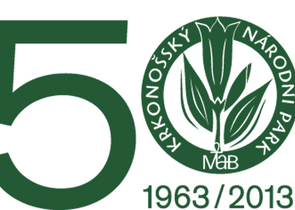The Journal is published by the Nature Conservation Agency of the Czech Republic in cooperation with the Cave Administration of the Czech Republic, the Krkonoše Mts. National Park Administration, the Bohemian Forest Mts. National Park Administration, the Podyjí National Park Administration and the The Bohemian Switzerland National Park Administration. It has been published since 1946.
cs / en
Nature Conservation 2/2013 — 21. 6. 2013 — On Nature in the Czech Republic — Print article in pdf
Štursa J. & Hřebačka J.: Half a Century of the First Czech National Park

Five decades of the Krkonoše Mts. National Park (NP) – the first of the group of four national parks in the Czech Republic – provide a remarkable reflection of care and management of the national natural and historical entity.
From an initial euphoria through scepticism caused by a lack of legal tools and finances, calvary of a huge pressure put by a new, considerably consumption-oriented society on mountain ecosystem viability up to a hope which appeared at the beginning of the new millennium. Nature and landscape development can be hardly stopped: moreover, it can be positively as well as negatively influenced. The same has happened in the Giant Mountains (Krkonoše in Czech, Riesengebirge in German, Karkonosze in Polish), the highest and most popular mountains in the Czech Republic. The first steps taken by the then newly established Krkonoše NP Administration had been related to immense efforts made by a few pioneers in large-size territorial nature conservation in the country. Although it was not definitely an easy task, they acquitted themselves creditably and we must praise them for that as well as all the persons from nature conservation, academic and civic communities and also from civic societies who, in a hard time of environmentally-unfriendly disuse of the landscape in the second half of the 20th century, patiently convinced the society that their approaches, knowledge and requirements are totally correct. Asserting objective opinions about urbanistic approach to further development of the mountain landscape, about seeking for reasonable solutions for minimizing catastrophic air pollution impacts on the Giant Mts. and about the vision of the further development within a new society, which begun to seek for new ways at the end of the 20th century, was not at all easy. Similarly, the current generation of naturalists, forest managers, farmers or historians makes everyday efforts to ensure that use of the Giant Mts., from their foothills up to the mountain ranges, is being really environmentally-friendly. The current state and an assumed development in the Krkonoše Mts. NP provide a significant guarantee that unique values of the mountains just in the heart of Europe, small in size but of great importance, will be in the highest degree maintained viable for the at least next half a century.

